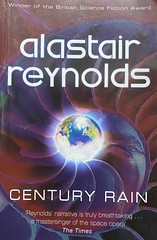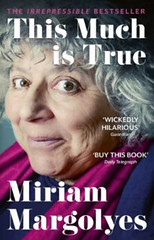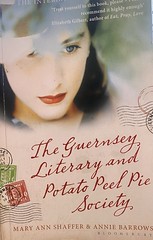You’ll both be aware that I offered a few impressions of the first two episodes of The Rings of Power, the multi-squillion-dollar televisual emission from Amazon Prime. Now that all eight episodes of the first series (or ‘season’, as we are now obliged to call such things) have been aired, I thought I’d note down a few thoughts, more for my own edification than anything else, as it seems that everyone has their own deeply entrenched opinions. The Guardian, for example, thinks that the series was ‘a stinker’. Mind you, I don’t much care for the Guardian. In any case, nobody cares what I think. In general, though, I think that The Rings of Power is far more than a fantasy extravaganza, for beneath the CGI it asks penetrating questions about the nature of good and evil, and whether the goodness or evil of an act might just as easily rest on one’s perspective as any innate quality of the act or its intention.
As before THERE ARE SPIDERS SPOILERS, so if you haven’t yet seen all the episodes, you may look away now.
Overall — I found it most satisfying. I have watched almost all episodes twice. I know in my earlier post I said I didn’t care if the story did violence to Tolkien’s original, but that was perhaps disingenuous of me. I do care. Of course I do. The story was consistent with Tolkien’s (admittedly sketchy) narratives of the Second Age of Middle-earth (after the ‘Elder Days’ of the Silmarillion, but thousands of years before the events in The Lord of the Rings), and such liberties as it took actually, in the end, generally enhanced the story rather than detracted from it.
Here’s a brief run-down of the Second Age in Tolkien’s imagined world, inasmuch as it concerns the first TV series. The First Age, or ‘Elder Days’, ended with the defeat of Morgoth, the first Dark Lord. Sauron, Morgoth’s chief Hench Entity (he is the Dark Lord in The Lord of the Rings), escapes, and there is peace for a long while. The Men (that is, humans) who aided the Elves were given a large island, Elenna, to live on, in the middle of the ocean, where they founded the kingdom of Numenor. Although there was much commerce between Men and Elves, as the Age wore on, Men became suspicious of Elves and jealous of their immortality. The Men left behind in Middle earth – those who did not qualify for entry into Numenor — were a wretched bunch, haunted by their erstwhile service to Morgoth, and generally abandoned. As the age progressed they were aided by visits from Numenor, visits that became increasingly colonial and dominating. Meanwhile, those Elves who did not return to the Blessed Realm of Valinor in the far west founded a kingdom called Lindon on the far northwestern corner of Middle-earth, presided over by Gil-galad, the High King. The Dwarves, meanwhile, opened up their kingdom of Khazad-Dûm in the Misty Mountains. Some of the Elves who took delight in manufacture and smithwork founded a country called Eregion nearby, and there was much commerce between Elves and Dwarves. One result of this interaction was the forging of the Three Rings of Power, artefacts that helped preserve the culture of the Elves against the ageing of the world. Unbeknown to the Elves, they are aided in their effort by a mystery smith called Annatar, who turns out to be none other than Sauron. After that events take a nosedive, but that’s enough to be getting on with for now.
The TV series follows one main story, with another only tangentially related, and a third hardly at all.
The main story (which I discussed more in my earlier post) follows the young Elf Princess Galadriel, very much a warrior, in her obsessive search for Sauron. Gil-galad tries to dissuade her, saying that evil has been vanquished, but privately confesses to Elrond (his herald and speech writer) that evil might still lurk and that an effect of Galadriel’s quest will be to stir up what might have been best left slumbering. His remarks are, indeed, prescient. (Linguistic Note: The Elves speak standard, Received-Pronunciation English). After several adventures Galadriel finds herself castaway on a shipwreck with Halbrand, a Man of the ‘Southlands’ of Middle-earth who is escaping who-knows-what depredations by those Orcs still around after the First Age — for not all were destroyed. They are both rescued by Elendil, a Sea-Captain of Numenor. (Linguistic Note: Halbrand has a Yorkshire accent).
The story thus shifts to Numenor, where we meet the Queen Regent, Miriel; her chancellor, the charismatic Pharazon; and Numenorean society in general. (Linguistic Note: Numenoreans, like Elves, speak standard Received-Pronunciation English). Halbrand would like to remain in Numenor and become a smith, but Galadriel discovers that Halbrand is a scion of a lost kingdom in the Southlands and persuades the Numenoreans to launch an expeditionary force to aid the Southlands and restore him to his kingdom.
In the Southlands, we find a small village of people (with Yorkshire accents). A healer, Bronwyn, a single mother with a teenage son, Theo, is close to Arondir, an Elf who is part of a detachment charged with guarding the Southlands. When Gil-galad determines that peace has returned, the detachment is withdrawn… but not before falling foul of a band of Orcs. The Orcs, which hate sunlight, are tunnelling and undermining the entire area, slowly turning it into a kind of Western-Front hellscape. Which is a shame, as the Southlands look rather pleasant, except for the volcano that broods on the horizon. The Numenoreans land and help the Southlanders defeat the Orcs, or so it seems. Galadriel has a confrontation with the leader of the Orcs, who turns out to be a corrupted Elf, called Adar. However, the Orcs use a sneaky contraption that floods the magma chamber of the volcano with water, prompting a violent eruption. The Numenoreans and Southlanders have to retreat from a land that is turning, very quickly, into Mordor. The volcano is of course Orodruin, or Mount Doom of The Lord of the Rings. Galadriel and Halbrand make their way to Eregion.
Meanwhile, Gil-galad sends Elrond to Eregion, where he is required to help Celebrimbor in a new project. There is some hurry, apparently, but Celebrimbor doesn’t have the manpower. Elrond goes to nearby Khazad-Dûm to enlist the help of a friend, Prince Durin, heir to the throne. This story — a personal one, of Elrond’s relationship with Durin, is the meat of the second story. (Linguistic Note: The Dwarves speak with Glaswegian accents). Together they discover a new ore called mithril which Elrond says will stop the Elves from fading, but Durin’s father, also Durin, forbids further work mining mithril, and with good reason — the mine workings disturb an ancient menace, slumbering far below the Dwarf mines (this is the balrog from The Lord of the Rings). Elrond is thrown out of Khazad-Dûm with a single nugget of mithril. Back in Eregion, Celebrimbor uses the mithril to forge the Three Rings, with helpful suggestions from Halbrand, which Galadriel finds suspicious. The dwarf storyline is only there to provide the mithril, and warn us of the oncoming Balrog. It also forces us to ask about the costs and benefits of friendship. King Durin puts the friendship between his son and Elrond at hazard for a greater good – the disobedience of Durin (fils) in digging for mithril at Elrond’s urging, will, eventually, cost far more.
The third story concerns the Harfoots, a wandering tribe of proto-hobbits, living somewhere near Greenwood the Great (the later Mirkwood). One of them, a young woman called Elanor Brandyfoot, befriends a stranger (known as the Stranger, with a capital ‘S’) who falls from the sky in a meteorite. The Stranger is very confused but seems to have magical powers. (Linguistic Note: the Harfoots have Irish accents). Their story interacts with the others not at all, except that they notice that parts of their landscape have been burned by lava bombs from distant Orodruin.
The question the Tolkien Twitterverse asked throughout the series was — who is Sauron? I thought it might be the Stranger, and indeed, in Episode 8, the Stranger is approached by three magi who are convinced he is Sauron, only to find that he is, in fact, an Istar, or wizard. (I was reminded of the scene at the beginning of Monty Python’s Life of Brian when the magi come to worship the baby Brian, but realise they have come to the wrong house). It seems clear from some of the things he says to Elanor that he is in fact Gandalf. In Tolkien’s legendarium, Gandalf arrives in Middle-earth respectably by boat, thousands of years later, his task being to inspire the residents of Middle-earth to rise up against Sauron. However, thinking about it, his fiery televisual arrival is satisfying for a number of reasons. First, he is disadvantaged from the beginning — shocked, disoriented and naked, he has to make a start from nothing. Second, the fact that he is befriended by Harfoots explains Gandalf’s later fondness for hobbits (which Tolkien does not explain). Third, that the magi mistake him for Sauron. In Tolkien’s mythology, Gandalf and Sauron belong to the same order of angelic being. In The TV adaptation, it is the benign influence of the Harfoots that turns the Stranger towards ‘good’ — perhaps, had the Magi got to him first, he could have been turned to evil. In effect, he could have become Sauron. As Tolkien notes, even Sauron was not evil in the beginning. Perhaps our choices — whether good or evil — are not innate, but determined by early experiences?
Is Adar, the corrupted Elf, then, Sauron? No — but his depiction lends a new poignancy to the stories of the origins of Orcs. This is a vexed question I discussed at length (even more length than here) in a book, but Tolkien was very clear that, in one respect, Orcs originated from Elves that were ensnared by Morgoth, twisted and ruined. Adar, then, although he looks like a battered Elf, is one of the first generation of Orcs. His fellow Orcs (his ‘children’, produced by some unknown means) are much more human-looking than many of the Orcs in the (much later) Lord of the Rings, as if Orcs become more degenerate with time. We see that Adar is far less morally compromised than, say, Galadriel — he cares neither for good nor evil, only for the welfare of his band of Orcs.
Sauron turns out to be … Halbrand. In a key scene in the season finale, he wars in thought with Galadriel. He admits that ‘I have been awake since before the breaking of the first silence’: that is, he is a divine being. But he also, it seems, would like to make amends.
When Morgoth was defeated, it was as if a great clenched fist had released its grasp from my neck, and in the stillness of that first sunrise, I felt — at last — the light of the One again. And I knew, that if ever I was to be forgiven, that I had to heal everything that I had helped ruin.
[Theological Note: The One is the High God, above the angelic Valar, in which category Morgoth originally belonged; and the lesser but still angelic Maiar, which include Gandalf and Sauron]. Halbrand/Sauron tempts Galadriel with the thought that she might be his Queen, using lines (‘stronger than the foundations of the Earth’) that we saw Galadriel utter in Peter Jackson’s Lord of the Rings (she rejects this). At the end of this confrontation, Halbrand’s eyes turn slit-like, like that of the cat Sauron always was, and the single lidless cat’s eye he would eventually become (blink and you’d miss it). But before that, Sauron, at all points, seems to be the reasonable one in the argument, compared with the fanaticism of Galadriel. Were Galadriel to ally herself with Sauron, he seems to say, she could save herself and millions of others much misery, and restore order to Middle-earth. He knows that the best lies are 90% truth, and Galadriel well knows that to search for evil, one first has to confront darkness in oneself. At the end of the episode we see him journey to the Mordor that Adar and his Orcs have prepared for him.
In the end, The Rings Of Power asks important and subtle questions about the nature of Good and Evil – questions with which Tolkien himself wrestled. There is ‘Good’ and ‘Evil’ in us all. We have the potential to do either, and our choices ever rest on the edge of a razor.
[Further Linguistic Note: distinguished Tolkienist John Garth noted on Twitter that Sauron’s Yorkshire accent, might, after being in Mordor, become more like that of the Black Country].




















